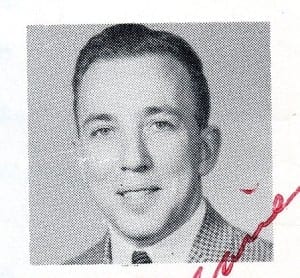Graeme Decarie: The 78th Fraser Highlanders fought at Quebec, were disbanded, and settled in Fraserville
The following text is from Graeme Decarie as a follow-up to a previous post.
Census figures
I just found some old census figures I have going back to Nouvelle France. They go from 1665 up to 1861. There is no mention of St. Laurent until 1739, when it had 165 families. Most of them would have farming families – and I have no indication of what the boundaries of St. Laurent were then.
And, right up to 1861, there is no mention of Cartierville, though some quite small settlements are named in the rest of the province.
78th Fraser Highlanders
For those few who care, a regiment of British soldiers who fought at Quebec was the 78th Fraser Highlanders. They were disbanded here – the only British regiment I have ever heard of that was disbanded outside Britain – probably because Britain was not anxious to disband a seasoned highland regiment to its home in Scotland at a time when the highlands was becoming rebellious.
They were settled at a place on the St. Lawrence called Fraserville where the soldiers settled down, and married the local, French women. That’s why the region is now full of French-speaking Quebecois with Scottish family names.
Oh, it’s not called Fraserville any more. It’s called Riviere du Loup. But the main street is still rue Fraser.
I learned of this because the regiment still exists. During the summer, its cadets are on duty at the old fort on St. Helen’s Island. As I write this, I am looking at the document signed by the Colonel of the regiment to appoint me as a Captain-Lieutenant of the 78th Fraser Highlanders. It was hard work with so many officers’ mess dinners at the Black Watch, and so many speeches to give on the birthday of Robert Burns, so many toasts to drink. But I got to wear a neat kilt and officer’s mess jacket. And when we drank a toast to the monarch, the glass of scotch was held over a glass of water because we were drinking to the real king of Scotland, Bonnie Prince Charlie. He spent much of his life in France – so we were drinking to the king across the water.
graeme
[End of text from Graeme Decarie]
Comment
At the Nov. 26, 2014 meeting in Kitchener of the MCHS 60s Reunion & Celebration of the 60s organizing committee, which will be reported upon in a Newsletter sent out to members of the MCHS 60s Reunion database, some considerable discussion was devoted to the potential role of bagpipe music at the upcoming Oct. 17, 2015 reunion at the historic Old Mill Toronto.
As well, the story of the 78 Fraser Highlanders reminds me of the key role that British regiments have played on so many levels in Canadian history. Last summer I visited the site of the Battle of Crysler’s Farm and also learned about the Battle of Chateauguay.
The two battles prompted the American side to abandon its efforts to conquer Canada during the War of 1812. The British side, which included British regulars, francophone soldiers, and First Nations warriors, was in each case vastly outnumbered but better trained, and led by more capable commanders.



According to the 18th Cent. chronology for Saint Laurent at the Ville de Montreal website
[ 18th Century – Saint-Laurent ], in 1722 there were 29 homes in the Parish of St. Laurent. Also, the chronology says that a court order that year established the boundaries of the parish. It could be that by 1739, the population of Saint Laurent had increased 5-fold +; but I’d say, even with this huge increase over 17 years, all the families were still farm. What else could they be at this stage? The 19th Cent. chronology at this website says that St. Laurent’s first industry was the stone industry, beginning operations in 1860.
There’s a map of Montreal (circa 1868) prepared by H.S. Sitwell et al at images.banq.qc.ca which indicates Saint Laurent had hotel close to a smithy.
No mention of Cartierville until 1861? Sounds right. Some people (even former Cartierville residents who lived there for years) think that Cartierville was named after Jacques Cartier. Not so. Cartierville was named after Sir George Etienne Cartier. After an illustrious legal and political career, he died at age 58 in 1873. He never lived in Cartierville (out in “the sticks”). His Montreal residence was at 458 Notre-Dame Street East (now a national historic site).
George-Etienne Cartier was a most interesting historical figure.
One of the interesting things about G.E. Cartier is that he was a rebel at one time. He took part, as a recently admitted member of the Bar, on the side of the rebels in the 1837 Lower Canada Rebellion. The authorities didn’t like that, so they exiled him and he went to live in Vermont for a while. He was eventually allowed to return to his homeland. But guess what? He decided to join the Saint-Jean-Baptiste Society (famous in later years for supporting a separate Quebec). In fact, he was a co-founder of this society! Meanwhile he had a law practice where his clients included the Grand Trunk Railway, which sounds like he was now becoiming a bit of a pro-Establishment kind of a guy. He then got into politics and was elected as a Reformer. [According to Wikipedia, The Reformers were more a loose movement than a party. Individual members voted independently on various issues.] As a politician, Cartier looked after the interests of the Grand Trunk Railway and became a friend of Sir John A Macdonald and became a member of the Cabinet. Not bad for a former rebel! Then, from 1857 to 1862, he was co-premier with MacDonald of the United Province of Canada. In the years leading up to 1867, Cartier played a leading role in getting Canada East (Quebec) to become part of the new country, Canada. Apparently, his big concern then was the threat of the expanding power of the United States.
Just think, if Cartier hadn’t abandoned his French-Canadian patriotism and rebelliousness and not lead Quebec into Confederation and the United States adopted a policy of leaving a largely French speaking territory alone, there probably would never have been a need for separatism in Quebec and the Quiet Revolution of the ‘60s.
Incidentally, Cartier also played a key role in the abolition of seigneurial system of land ownership in East (Quebec) in 1855. What that system involved was strips of land about 300 feet wide, fronting on a river, and extending for miles inland. Crazy system but it explains the layout of early Saint Laurent and the unlikeliness of a village there until after the system was abolished.
I’ve enjoyed reading a 1983 review of two books about George-Etienne Cartier, which describes him as “an elusive figure in Canadian history.”
I enjoy reading about the work that Cartier did with the Sulpicians, who among other things were involved in the colonization starting in the late 1600s of the land on the north shore of the island of Montreal.
Land dealings involving the Sulpicians over 300 years ago also set the stage for the Oka crisis.
I enjoyed reading your latest post. I wasn’t aware there were book reviews which suggest he was kind of ambivalent. Whose side was he on? First he rebels, founds the Saint Jean Baptiste Society, then, after the defeat of the Rebellion, he collaborates with the English. I enjoyed reading the review where it says: ” It seems logical to wonder if …Cartier ….. represent[s] a betrayal of the patriote ideals of 1837.” The work that Cartier did with the Sulpicians (who were his clients): he got rid of the seigneurial system (at the behest of the English), a system “seen by some as the chief bulwark of ethnic survival”. I’m not sure how Oka fits into this. The Indians had their own way of regarding who owned the land: the tribe.
Good to read your message.
I became interested in learning more about the Oka crisis after reading about the history of Cartierville. What I’ve learned I’ve shared in a couple of posts:
Do you recall the Oka crisis?
Legacy of the summer of 1990 Oka crisis
A related topic concerns the history of the first inhabitants of North America:
24,000-year-old body is kin to both Europeans and North American First Nations.
I recall being in Montreal in the summer of 1989 and talking with someone about news of “rumblings” of the Indians. I think it had something to do with a golf course where sacred Indian burial grounds used to be. Maybe it was about something else. I can’t say I understood what it was going on in Oka at the time.Later that year, I moved to Vancouver, BC. Things at Oka came to a head in summer of 1990 (according to the link you posted above). I think I remember seeing something/reports/pictures in the paper at that time, involving a confrontation between the Indians and the Q.P.P.But I didn’t follow the situation too closely and never learned how the problem was resolved. Or what the problem was in the first place. You say land dealings of the Sulpicians 300 years ago had something to do with it. Not sure I follow you there. As far as the history of Cartierville, the only possible link to Oka I can think of is the Indian footpath that went west from whatever Cartierville was before it was called Cartierville to the Lake of Two Mountains. This path later became a road that would include Gouin Bd. and in A Ma Baie, Saraguay Rd.
The details regarding the Oka crisis are covered from a wide range of perspectives in the books and a documentary that are mentioned in the previous links. Until I began reading the resources, which in my case I can access through the Toronto Public Library, I didn’t know much about the details. The documentary that I mention is also available for view at the National Film Board website. It’s accessible at the link in the previous sentence.
With regard to current history, as it related to the First Nations, the following post provides a good overview:
Supreme Court’s Tsilhqot’in First Nation ruling a game-changer for all – June 27, 2014 CBC article
Another post also expresses my interest in the topics at hand:
Aerial view of Ontario landscape northeast of Dryden and Thunder Bay
I finally figured out how the Sulpicians set the stage for the Oka crisis some 300 years ago. Apparently, they got the King of France to change his mind right after he had granted the Mohawks some land so that he gave it to the Sulpicians instead, circa 1716.